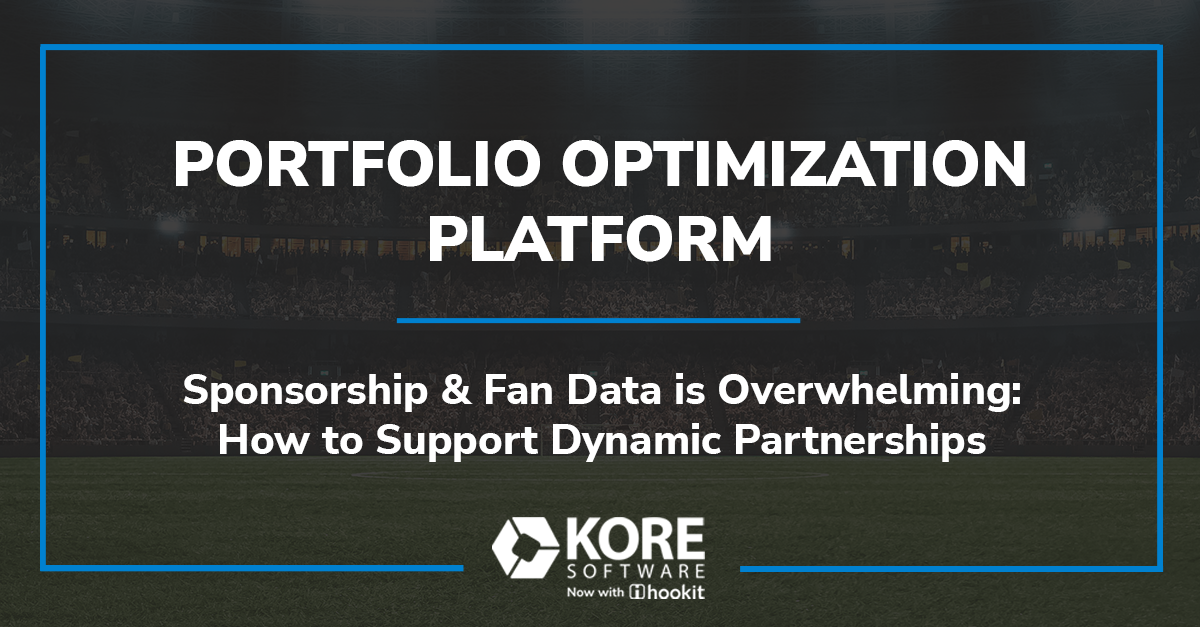Introduction
The sponsorship world is evolving as fast as technology. It’s hard for anyone to keep up. This means it’s critical for brands to learn how to cut through the noise and identify first what they want to achieve with their partnerships before diving into all the data available. Once partnerships are established, it’s important to take small steps at a time to manage, measure, and optimize them accordingly.
Data is Changing the Sponsorship World
Here we’ll explore some ways that data has impacted the sponsorship space, how brands and rights holders are responding, and what you can do to help your brand expand its data-driven initiatives.
With digital transformation comes more data, and more insights
People aren’t just watching their favorite teams or athletes on TV, or at the stadium. They interact with them on social media, in gaming and through newer digital spaces like the metaverse, with non-fungible tokens (NFTs), and through Augmented Reality (AR). People consume content via social media now more than ever. This futuristic reality is already here. When brands gain deeper digital insights into how their partnerships are impacting fan behavior this information can help organizations better understand their target markets and identify new opportunities, with a fresh perspective, leading to more creative and unique activations. Additionally, data can be used to improve existing partnership strategies by measuring different tactics’ success. For example, when a brand launches a social media campaign as part of its sponsorship activation, it can use certain types of data analytics to determine whether the campaign was successful. With so many types of data points, it’s hard to determine what the most important data points are. Below we outline just a few.
Examples of social analytics vary, but can include:
- Total Fans – Total number of followers
- Likes – The number of times something has been liked (all platforms)
- Impressions – (defined and supplied by each social platform)
- Promotional Quality – Hookit defined factors include:
- Position – Text within a post description
- Coverage – Based on the number and size of logos in a post
- Crowding – Consideration of non-branded text
- Viewership – Based on exposure
- Fan Engagement – Average interactions per post divided by follower count
- Earned Media – Defined by Hookit and including but not limited to
- Earned Promotion
- Earned Posts
- Adjusted Ad Value – a deep, key measurement of text, image, video, hashtags, quality and engagement combined within a formula
We don’t have to measure everything, just for the sake of it
Every brand has different goals and objectives and every partnership activation can be uniquely built to serve those objectives. The critical part to understanding what data or analytics to look at is to first understand what the partnership is trying to achieve. Go back to the basics. When the objectives are clear, it’s easier to determine the Key Performance Indicators [KPIs] for that partnership or activation.
Data-inspired partnerships are well-nurtured ones
Another way data is reshaping sponsorship is how partnerships between brands and rights holders are becoming more dynamic. Post-COVID-19, data analysis has shown that the number of partnership deals have dropped while the spending has gone up. This means brands are working with a smaller number of partners that have larger investments behind them. This has led to deeper collaboration yet more budget scrutiny.
Dynamic partnerships are strategic and mindful
Through the evolution of sponsorship over the past 20 years, KORE Software’s Chief Product Officer, Marc Roots, notes that traditionally, rights holders would measure and summarize various data points providing recaps to their brand partners as a supportive service. But now we see brands and rights holders sharing more data, like ticketing and fan journey information, or campaign activation data on a consistent basis. The shift has moved from intermittent recaps to an on-demand partnership recap. “It’s something more centralized where both brands and rights holders are looking at a common set of metrics as often as daily, but more often on a week-to-week or monthly basis.” Roots continues, “As a result, you’re seeing things like assets getting swapped out, activation plans changing, different campaigns running, choosing different social channels to hit certain types of targets.”
Creating a stronger data pulse for both sides of the partnership can support more mindful planning and swift, strategic changes for business needs.
How Technology Can Support Dynamic Partnerships
The two ways we help rights holders and brands move together dynamically are through tools and platforms. Every brand and rights holder is on a different level with their data and business intelligence tools. First, we help both types of organizations align with data terminology and learn to speak the same language. Then we get focused on where each organization is in their partnership evaluation maturity. For example, with one brand we may focus on one partnership and really work through the pain points of that key partner and measure just one thing at a time. When you want to measure everything because there’s so much data, it’s overwhelming. Start small and expand as you go. This makes it easier to bring leadership along with you and for internal culture to adapt to recent changes.
Earlier this year we officially teamed up with a long-time industry partner, Hookit, an AI-powered analytics tool, to create an industry-first centralized system for both rights holders and brands where they can collaborate and manage, measure and optimize their partnership portfolios from one spot. Read the press release here.
Data-driven partnerships can lead to creating clear sponsorship value because of the tools and measurements that deliver insights to explore. It’s important to use the right tools to gain productive measurements that both partners can act on. Because of this, data-driven organizations raise the bar with strategic planning. They create more engaging experiences for fans and can justify marketing spending. By taking the time to understand data intelligence and its impact on sponsorship, brands can stay ahead of the curve and continue to reap the benefits of this evolving industry.
Read What You Need to Know Before Diving into Data Intelligence, to understand how to set up your partnerships for long-term success and how to help your organization become more data-driven. If you have questions or would like more information on setting up a centralized system for your partnership strategy, contact us anytime. We’re here to help.

KORE is the global leader in engagement marketing solutions, serving more than 200 professional teams and 850+ sports and entertainment properties worldwide, providing practical tools and services to harness customer data, facilitate sponsorship sales and activation, and create actionable insights.


